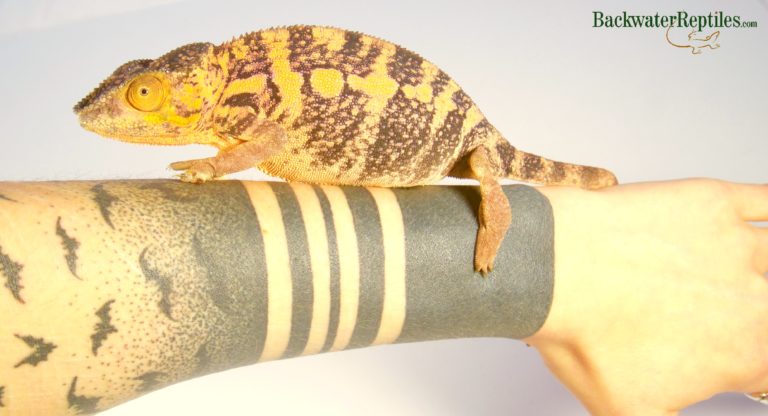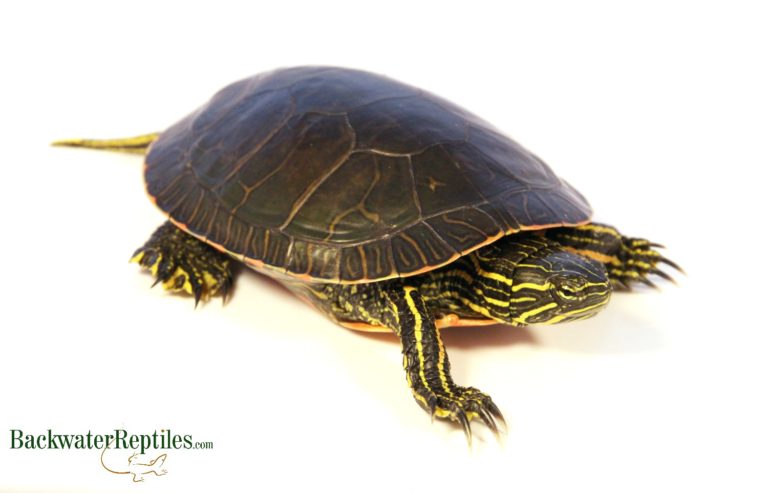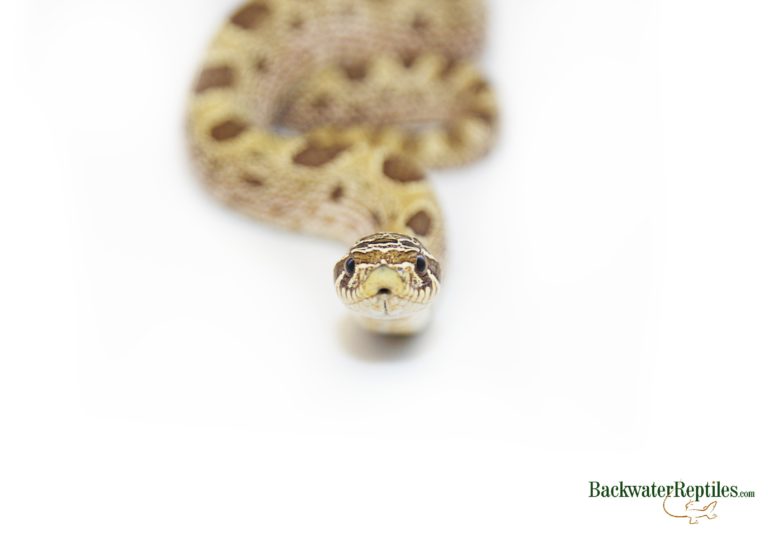What are the largest snake species you can legally keep as a pet?
Although the laws vary from state to state, in general the largest species of snake that you can legally own as a pet are: Anacondas, Reticulated Pythons, and Burmese Pythons. Each of these large snakes can make great pets, provided you have the resources to take care of them.
Anacondas
There are two species of anaconda that are kept as pets in the U.S. – the Green Anaconda (Eunectes murinus) and the Yellow Anaconda (Eunectes notaeus). Both hail from South America, however the Green Anaconda does grow to be larger than the Yellow Anaconda.
Both species of anaconda are constrictors and therefore nonvenomous. Due to their enormous size, they are ambush predators. Green anacondas are sluggish and slow-moving on land and therefore prefer to lie in wait in the water with their nose exposed above water. When prey passes nearby or stops to get a drink, the anaconda will strike and begin constricting.

Because they spend so much time in the water, anacondas usually eat aquatic food. When they are smaller, they’ll eat fish, birds, small mammals and amphibians. As they grow larger, they’ve been known to eat tapirs, deer, capybara, and caiman.
Anacondas have seen a surge in popularity as pets in recent years due largely in part to their appearance in pop culture movies. While the computer generated anacondas of the big screen might seem like scary or monstrous man eaters, in reality, they’re just reptiles who happen to grow to be massive.
As previously mentioned, Yellow Anacondas are smaller than Green Anacondas. Greens can be up to seventeen feet long and weigh over 200 pounds! That’s a whole lot of snake! On the other hand, Yellows max out at around eleven to twelve feet long.
While Backwater Reptiles does sell both Yellow Anacondas and Green Anacondas, we advise that only highly experienced reptile keepers own them for several reasons. Not only do they grow to massive sizes, but they require specialized aquatic habitats.
When they are adults, they also need large food items. And finally, we want to stress that neither species of anaconda is known for being particularly docile or even-tempered. Babies can be quite snippy and adults are unpredictable at best.
Reticulated Pythons
For a while, it was illegal to ship or transport Reticulated Pythons across state lines. The ban has since been lifted and Retics (as they are known among reptile enthusiasts) are as popular as ever. It should be noted however, that it is still illegal to ship them to specific states.
While anacondas might be the heaviest and thickest of the snake species commonly kept as pets, Retics are the longest. Maxing out at twenty-three feet long, these pythons are monsters!

Reticulated Pythons are popular with reptile and snake hobbyists because of their gorgeous markings. These snakes got their common name from the unique diamond and lace-like pattern that adorns their scales. Even the snake’s scientific name, Python reticulatus, means “net-like.”
Reticulated Pythons, like their anaconda cousins, are known to be excellent swimmers. However, in captivity they are not as aquatic, although they should still be provided with an area to soak and submerge themselves in water.
Retics are one of the few species of large snake that are known to be “man eaters.” We do want to make it clear that if a captive Retic is well-fed and cared for properly, there should be absolutely no need for a snake to view its owner as food or prey.
Backwater Reptiles does sell Reticulated Pythons, however they are a bit tough to come by, even after the ban has lifted. They come with quite a hefty price tag and again, just like with anacondas, we recommend them for experienced herp owners. They are not beginner snakes.
Burmese Pythons
Burmese Pythons (Python bivittatus) were made very famous when a certain well-known pop star by the name of Britney Spears wore one around her neck during a performance. We’re not claiming that she made them famous first, but she most certainly did bring awareness to the species and perhaps even helped cure some people’s fear of snakes.

Of all the large snake species discussed in this article, we’d say that Burmese Pythons are probably the most docile. Most of the other snakes are not known to have particularly docile dispositions, but Burmese Pythons actually are known to be good companion snakes, even at a very large size.
The average length of a wild Burmese Python is about sixteen and half feet, but in captivity, specimens have been recorded to be twenty-three feet long. In general, females are heavier than males and they can weight upwards of 200 pounds! They can also live longer than twenty years.
Sadly, Burmese Pythons are considered an invasive species in Florida in the Everglades. They are known to eat local mammals and compete with alligators, a species that is native to Florida, for food and resources.
Backwater Reptiles does have Burmese Pythons for sale, but it is illegal to ship them to specific states, so be sure and check with your local Fish and Wildlife Department prior to ordering.
Conclusion
We adore large snake species and we think they can most certainly make excellent pets for people who are experienced, have plenty of space to house them, and are prepared to handle such a massive animal.
Anacondas, Burmese Pythons, and Reticulated Pythons are all amazing snakes and each has its own set of care requirements and personality type. If you are interested in a large pet snake, we cannot stress enough that we recommend doing research and making sure that you can provide a large enough enclosure.
These snakes are forever pets, no matter how big they get and they can have long life expectancies. Be prepared to care for your large snake for at least twenty years if not much longer.
















